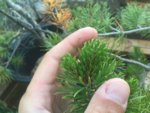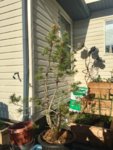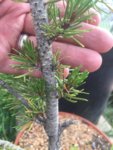Tycoss
Chumono
I have collected a few lodgepole pines this year in the mountains near me. I left the really nice stuff on the mountainside until I am more sure of my techniques. These were collected before the new growth began to extend. They were put in a very fast draining oil dry and lava mix, with the root balls full of field soil. I am watering quite heavily. I plan to leave them for one to three years to grow, depending on how they respond. Does anyone have some climate relevant information on the species. My climate is rather brutal (zone 3, cold, windy, dry and unpredictable). I have looked through old threads and only found advice to treat them as ponderosa or scots pine. Anything more specific?















